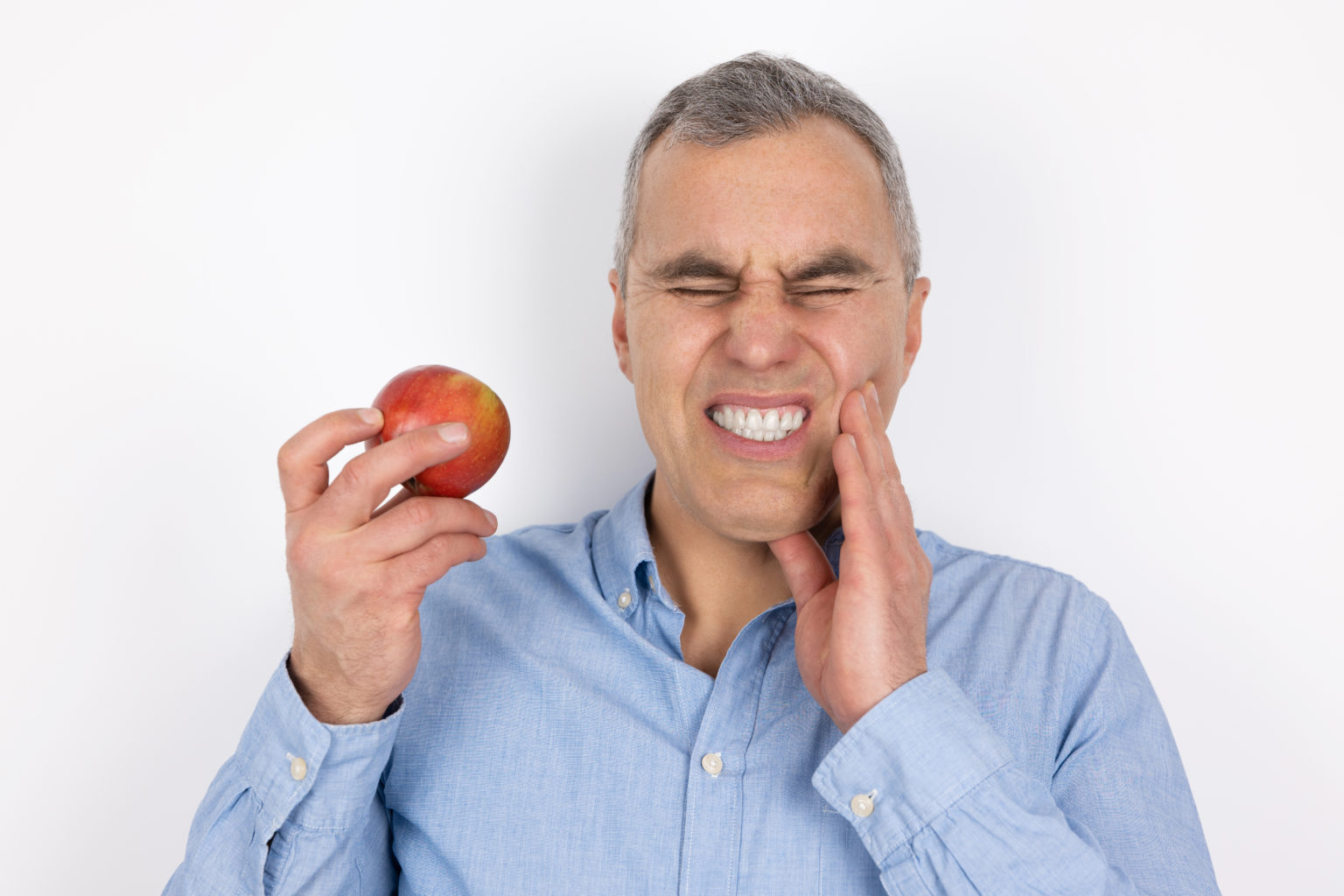
If you have TMJ pain after eating, your body may be telling you there’s something wrong.
While temporary pain that resolves quickly is usually no big deal, consistent soreness and pain in the temporomandibular joint (TMJ) needs to be taking seriously. Why? Because if you have persistent TMJ pain while eating, you are at risk for developing a chronic TMJ pain disorder.
Here we discuss what causes jaw pain from eating and how to avoid progression to a chronic pain disorder.
If you have TMJ pain when you eat, it could be due to an injury to the joint or its surrounding muscles and ligaments. The TMJ is the most frequently used joint system in the body, with both joints working in coordination to open and close over 2000 times a day and capable of generating hundreds of pounds of pressure.
The main problem that causes this TMJ pain is mechanical overload of the muscles. This can occur when eating hard or chewy foods or from jaw overuse behaviors, such as teeth grinding or gum chewing. When the TMJ muscles are stressed from eating hard or chewy foods, it sets the stage for chronic TMJ pain.
The muscles of the jaw that are responsible for opening and closing are called the “masticatory muscles” and they include the temporalis, the masseter, and the medial and lateral pterygoids. The overuse of the masticatory muscles can lead to diminished blood flow, local inflammation, and eventually, sensitization of the sensory nerves which is experienced as muscle pain. If the situation continues, inflammation of the muscle tendon (“tendonitis”) can also develop, most commonly in the temporalis tendon.
Here are the common symptoms people have with TMJ stress from eating:
• Muscle soreness
• Dull aching pain
• Stabbing pain
• Pulling or pressing sensation
• Tingling over the TMJ
• Tenderness to deep touch
• Headaches
• Neck stiffness or soreness
In most cases, TMJ pain from overuse will resolve in a couple of days. However, 20% of the time it will lead to a chronic TMJ pain syndrome. The most important window of time is to treat the pain in the first month after symptoms develop.
“What happens is that the persistent TMJ pain from overuse bombards the brain with impulses. This reinforces the neural pathways that enhance pain sensitivity, a process called ‘central sensitization’. Now even casual use of the jaw muscles during normal eating activity will register as being painful,” explains Bradley Eli, a specialist in orofacial pain and TMJ disorders.
It’s important to take jaw pain after eating seriously. Chronic TMJ pain can be a life-long struggle, so being proactive if you have jaw pain after eating may save you from years of future suffering.
The best approach for TMJ pain relief is multimodal. This means using an approach where many different strategies are used to achieve the same therapeutic goal. By employing multiple strategies to promote healing, you give yourself the best chance of preventing a chronic TMJ pain condition from developing.
The HEALS protocol is a commonly used multimodal approach to treat TMJ strain and overuse:
• H – Hot/Cold therapy: Alternating heat and cold will comfort aching muscles.
• E – Exercise: Gentle exercises will prevent jaw stiffness from developing.
• A – Analgesics: Anti-inflammatories decrease inflammation and pain.
• L – Lifestyle: Take stress reduction measures. Eat a soft food diet.
• S – Stress/Strain reduction: Intraoral splints will relax the jaw and prevent further injury.
The above components, including the QuickSplint® anterior bite guard, are part of the Speed2Treat® Home Healing Kit. It is specifically designed to bring quick relief for TMJ pain and to help you to understand how to prevent chronic TMJ conditions from developing.
Start your journey towards TMJ pain relief today!
